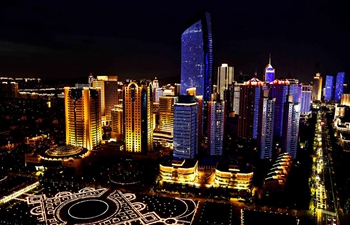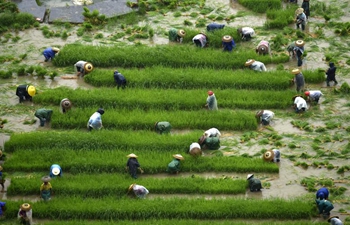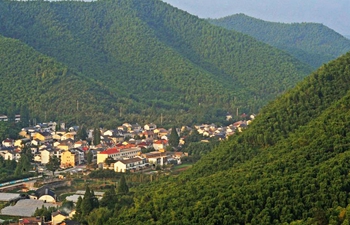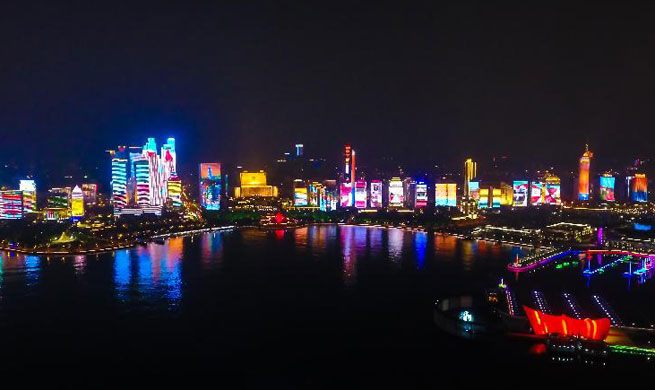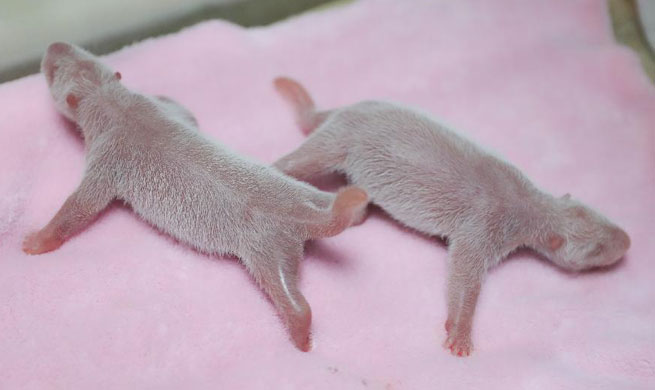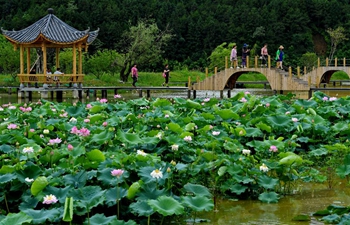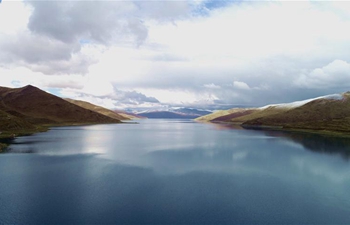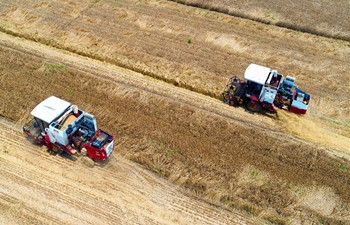WUHAN, June 5 (Xinhua) -- From Hu Sheng's doorstep he can see Daijia Lake, a water body which brings memories of both childhood joy and misery caused by pollution.
Hu, 71, lives in Wuhan, capital of central China's Hubei Province.
Over the past decades, he has witnessed Daijia be transformed from a beautiful lake into a hill made of coal ash, and then back into fresh water lake again.
In 1955, Hu and his parents moved from their home in Guangxi Zhuang Autonomous Region to Wuhan's Qingshan District, some of the tens of thousands of migrant workers who came to work for Wuhan Iron and Steel.
Back then, the over-60-hectare lake was a paradise for children.
"We often swam in the lake, catching fish and picking lotus root," he recalled.
It was a time when China was implementing its first five-year plan, with Wuhan Iron and Steel one of more than 100 industrial projects built across the country. Other plants, such as a thermal power plant and a cement plant were later built nearby.
Some of the coal ash residue from the power plant was used by the cement plant, but the rest was dumped in the lake, according to a manager at a local grid company.
"We were unable to make use of all the ash due to limited science and technology levels," said the manager who did not give his name. "We were told to prioritize production at that time, at the cost of the environment."
Waste industrial water mixed with coal ash was discharged directly into the lake around the clock, tainting the lakewater.
Over the following 30 years, the dumped ash exceeded the lake volume, turning it into a hill. Locals began to call the lake Daijia Mountain.
"Ash floated in the air. We had to keep our doors and windows closed," Hu said, adding some of his neighbors suffered respiratory problems.
Authorities estimated some 70 percent of the dust pollution in Wuhan in the 1980s came from Qingshan District, and the ash hill at Daijia was the main contributor.
In the late 1990s, Wuhan banned use of clay bricks, leaving coal ash the only material available for building construction.
"The waste ash suddenly became treasure, with coal ash factories swarming here to carry it away truck by truck," Hu recalled.
Holes were dug in the ash hill, which were later filled with household garbage and construction waste.
"Flies and mosquitoes were everywhere, and the putrid air made people retch," Hu recalled.
Treatment of the lake pollution started in 2013, one year after the 18th National Congress of Communist Party of China included ecological development as a major task in the country's overall plan and proposed building a Beautiful China as a grand goal for ecological progress.
Trees that can survive in barren and alkali resistant soil, such as Chinese parasol trees, were planted and water plants were placed in the lake to purify the water, said Tu Chengjie, deputy director of the lake's management department.
More than 30,000 trees were planted in the park, absorbing 18,000 tonnes of carbon dioxide and generating 12,000 tonnes of oxygen every year. Problems like dust, barren soil, and water pollution were also addressed.
The restoration area exceeded 500,000 square meters, and the work cost 426 million yuan (66.5 million U.S. dollars), said Tu.
Waste red brick, firebricks, and industrial waste were also utilized in the park as paving materials, sculptures, and benches.
Last year, the Ministry of Housing and Urban-Rural Development
presented the Daijia Lake restoration project with an award for being an examplary habitable environment.
Dong Yimin said he is lucky his father decided not to sell their apartment nearby to escape from the pollution.
"Now that we have clean water and a green environment, I can enjoy jogging around the lake every day," he said.




